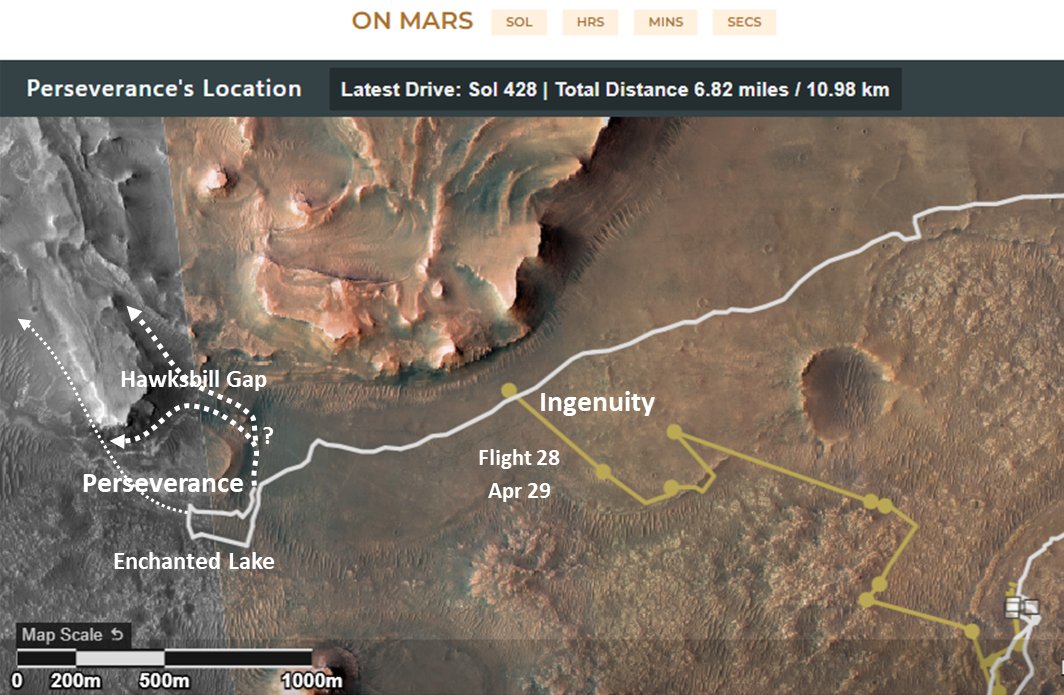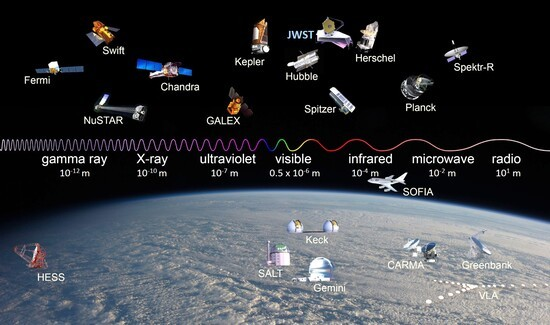How to get URL link on X (Twitter) App

 The size of the micrometeroid and the physical nature of the damage are not clear from the report. JWST does not have cameras to observe such damage. The impact of the micrometeroid is judged based on its effect on image quality.
The size of the micrometeroid and the physical nature of the damage are not clear from the report. JWST does not have cameras to observe such damage. The impact of the micrometeroid is judged based on its effect on image quality. 
 This is the current location of Perseverance, right on top of the "bacon strip". Percy is probably hesitant to climb up the delta until Ingenuity moves to a better location, since Ingenuity needs Percy to communicate with earth.
This is the current location of Perseverance, right on top of the "bacon strip". Percy is probably hesitant to climb up the delta until Ingenuity moves to a better location, since Ingenuity needs Percy to communicate with earth.

 The inclinometer's two accelerometers measure gravity prior to spin-up and takeoff; the direction of the sensed gravity is used to determine Ingenuity's orientation. NASA scientists had created a backup method to generate this data before Perseverance landed on Mars!
The inclinometer's two accelerometers measure gravity prior to spin-up and takeoff; the direction of the sensed gravity is used to determine Ingenuity's orientation. NASA scientists had created a backup method to generate this data before Perseverance landed on Mars! 
 A pair of crawlers (nicknamed “Hans” and “Franz”) were built in 1965 to move the massive Saturn V rocket from Kennedy’s Vehicle Assembly Building to Launch Complex 39. After the Moon landing and Skylab programs ended, the crawlers were used to transport the space shuttles.
A pair of crawlers (nicknamed “Hans” and “Franz”) were built in 1965 to move the massive Saturn V rocket from Kennedy’s Vehicle Assembly Building to Launch Complex 39. After the Moon landing and Skylab programs ended, the crawlers were used to transport the space shuttles.

 It appears that Perseverance is going to try the alternate route through an area called Hawksbill Gap to climb up the Jezero crater delta region. The diagram below includes some guesses for the new route.
It appears that Perseverance is going to try the alternate route through an area called Hawksbill Gap to climb up the Jezero crater delta region. The diagram below includes some guesses for the new route.
https://twitter.com/cbs_spacenews/status/1521887273406640138
https://twitter.com/BoeingSpace/status/1521779057582563328

 The tweets have been arranged in a single thread here. The originals had a few branches.
The tweets have been arranged in a single thread here. The originals had a few branches.https://twitter.com/markmccaughrean/status/1520855268325826565

 Lagrange made significant contributions to the fields of analysis, number theory, and classical and celestial mechanics.
Lagrange made significant contributions to the fields of analysis, number theory, and classical and celestial mechanics.

 JWST is in an elliptical orbit around earth, nearing it farthest point and has slowed down to 0.2020 km/s. JWST is high above the ecliptic plane to the right as seen from earth. The MCC-2 burn will steer it a bit towards the L2 point on its way down and back as shown above.
JWST is in an elliptical orbit around earth, nearing it farthest point and has slowed down to 0.2020 km/s. JWST is high above the ecliptic plane to the right as seen from earth. The MCC-2 burn will steer it a bit towards the L2 point on its way down and back as shown above. 
 Link to the DSN site - eyes.nasa.gov/dsn/dsn.html
Link to the DSN site - eyes.nasa.gov/dsn/dsn.html
 Figure 1 shows the forces on an object at the Lagrange point L2. The distance L2d is such that the combined gravitational forces of the Sun (Fs) and Earth (Fe) equals the centrifugal force (Fc) of the body revolving around the sun in sync with earth.
Figure 1 shows the forces on an object at the Lagrange point L2. The distance L2d is such that the combined gravitational forces of the Sun (Fs) and Earth (Fe) equals the centrifugal force (Fc) of the body revolving around the sun in sync with earth.

 Hubble primarily observes in the UV and visible light wavelengths from 0.1-0.8 μm but it can also see parts of the infrared (IR) spectrum from 0.6-2.5 μm.
Hubble primarily observes in the UV and visible light wavelengths from 0.1-0.8 μm but it can also see parts of the infrared (IR) spectrum from 0.6-2.5 μm.

 The Herschel Space Observatory, active from 2009 to 2013, observed in the far IR 55-672 µm range, from its perch at L2 (same as #JWST!). Its 3.5 m mirror was made of sintered silicon carbide. Detectors were kept at temps below 2 deg K, using 2,300 litres of liquid helium at 1.4 K
The Herschel Space Observatory, active from 2009 to 2013, observed in the far IR 55-672 µm range, from its perch at L2 (same as #JWST!). Its 3.5 m mirror was made of sintered silicon carbide. Detectors were kept at temps below 2 deg K, using 2,300 litres of liquid helium at 1.4 K 

 At L2, the centrifugal force on the object due its orbital motion must balance out the gravitational forces of earth and the Sun on the object.
At L2, the centrifugal force on the object due its orbital motion must balance out the gravitational forces of earth and the Sun on the object.
 We all know that the JWST primary mirror is composed of 18 hexagonal mirror segments.
We all know that the JWST primary mirror is composed of 18 hexagonal mirror segments.
